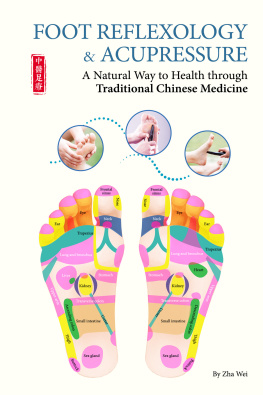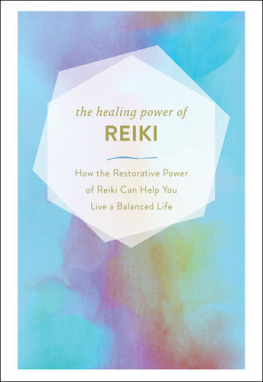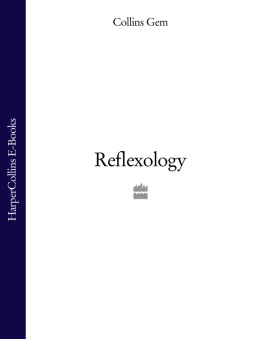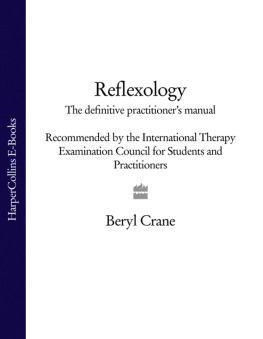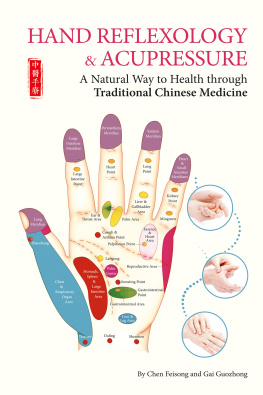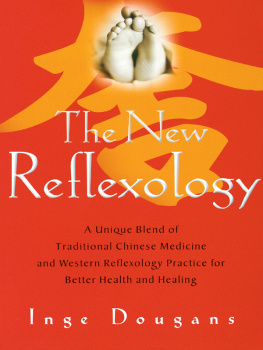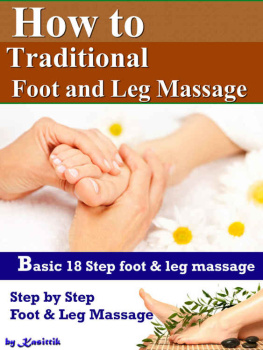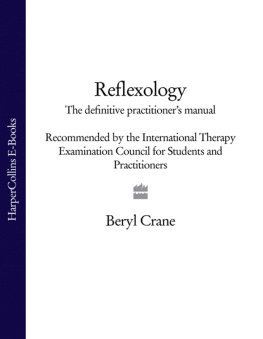Zha Wei - Foot Reflexology & Acupressure
Here you can read online Zha Wei - Foot Reflexology & Acupressure full text of the book (entire story) in english for free. Download pdf and epub, get meaning, cover and reviews about this ebook. year: 2020, publisher: Tuttle Publishing, genre: Home and family. Description of the work, (preface) as well as reviews are available. Best literature library LitArk.com created for fans of good reading and offers a wide selection of genres:
Romance novel
Science fiction
Adventure
Detective
Science
History
Home and family
Prose
Art
Politics
Computer
Non-fiction
Religion
Business
Children
Humor
Choose a favorite category and find really read worthwhile books. Enjoy immersion in the world of imagination, feel the emotions of the characters or learn something new for yourself, make an fascinating discovery.
- Book:Foot Reflexology & Acupressure
- Author:
- Publisher:Tuttle Publishing
- Genre:
- Year:2020
- Rating:4 / 5
- Favourites:Add to favourites
- Your mark:
- 80
- 1
- 2
- 3
- 4
- 5
Foot Reflexology & Acupressure: summary, description and annotation
We offer to read an annotation, description, summary or preface (depends on what the author of the book "Foot Reflexology & Acupressure" wrote himself). If you haven't found the necessary information about the book — write in the comments, we will try to find it.
Foot Reflexology & Acupressure — read online for free the complete book (whole text) full work
Below is the text of the book, divided by pages. System saving the place of the last page read, allows you to conveniently read the book "Foot Reflexology & Acupressure" online for free, without having to search again every time where you left off. Put a bookmark, and you can go to the page where you finished reading at any time.
Font size:
Interval:
Bookmark:
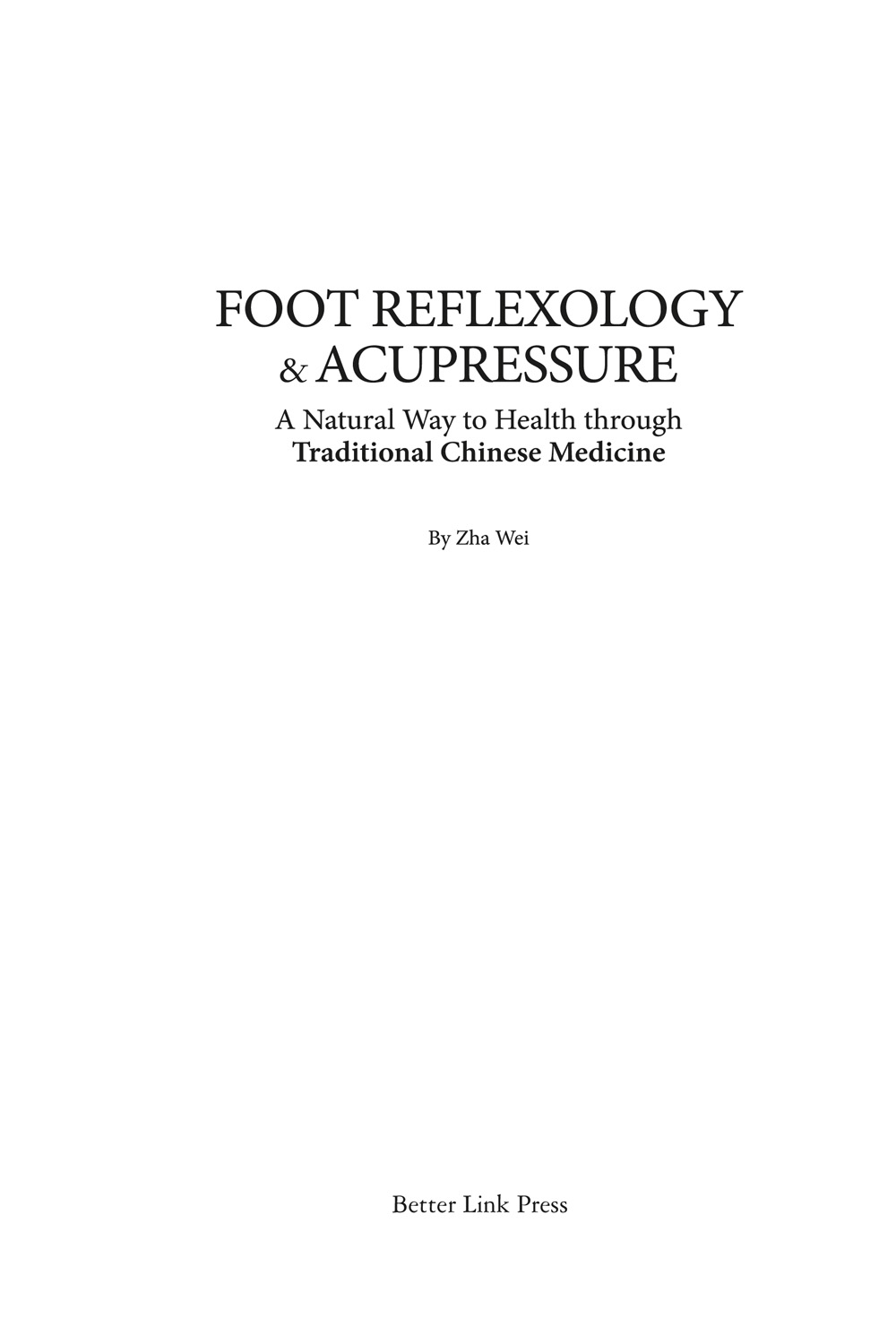
Copyright 2020 by Shanghai Press and Publishing Development Co., Ltd.
Chinese edition 2013 Phoenix Science Press, Ltd.
All rights reserved. Unauthorized reproduction, in any manner, is prohibited.
This book is edited and designed by the Editorial Committee of Cultural China series.
Text by Zha Wei
Translation by Wu Yanting
Design by Wang Wei
Copy Editor: Shelly Bryant
Editor: Cao Yue
Editorial Director: Zhang Yicong
Senior Consultants: Sun Yong, Wu Ying, Yang Xinci
Managing Director and Publisher: Wang Youbu
ISBN: 978-1-60220-164-4
Address any comments about Foot Reflexology & Acupressure: A Natural Way to Health through Traditional Chinese Medicine to:
Better Link Press
99 Park Ave
New York, NY 10016
USA
or
Shanghai Press and Publishing Development Co., Ltd.
F 7 Donghu Road, Shanghai, China (200031)
Email:
Printed in China by Shanghai Donnelley Printing Co., Ltd.
1 3 5 7 9 10 8 6 4 2
The material in this book is provided for informational purposes only and is not intended as medical advice. The information contained in this book should not be used to diagnose or treat any illness, disorder, disease or health problem. Always consult your physician or health care provider before beginning any treatment of any illness, disorder or injury. Use of this book, advice, and information contained in this book is at the sole choice and risk of the reader.
Introduction
T he practices of foot reflexology and acupressure have become well accepted as more people are increasingly aware of the importance of maintaining ones health. In general, foot therapy includes two parts, foot bath and foot reflexology, with the latter being most common. There are 77 reflex zones and 65 acupoints in the feet, each corresponding closely to a human internal organ or tissue. Stimulating these acupoints or the pathological reflex zones will regulate the functions of the zangfu organs and alleviate a variety of diseases, which will help people stay healthier.
Many of the reflex zones are located in the feet. Which should I massage? Should I do both? If I am coughing constantly, should I massage when I am coughing, or simply massage on a daily basis? My hands get tired doing reflexology. Is there a way to reduce the stress on my hands? What should I do if I cannot accurately locate the acupoints and reflex zones in my feet? This book will address these questions that have been raised by readers, outlining detailed steps including the duration of each massaging, the number of sessions needed to treat a disease, and how many sessions a course of treatment requires. In addition, the book will teach you how to use a reflexology stick, which not only relieves the stress on the hands, but also generates better therapeutic effects.
The book features pictures of real persons and computer graphics to show the locations of acupoints and reflex zones. They are not only beautiful to look at and easy to find, but are also highly accurate. The book has included foot reflexology and acupressure for 53 common diseases, alongside ten additional types of therapeutic approaches. You will learn to administer foot reflexology and acupressure simply by following the picture, with one image dedicated to each step. Massaging at home for a few minutes every morning and evening, for yourself or for your family, will bring both physical and mental relaxation to those who suffer from exhaustion.
Your health journey begins with a single step.
Chapter One
Understanding Foot Reflexology and Acupressure
I n the streets and lanes of many cities, there are foot massage parlors of varying sizes. Foot massage (also referred to as foot reflexology and acupressure) is becoming a lifestyle. Why dont we bring foot reflexology home from the parlor, doing it at home to take control of your own health? Learning to do foot reflexology and acupressure will help enhance your ability to care for your health and wellbeing. You will not only be able to promptly relieve pain for yourself, but also for your loved ones, which will in turn strengthen the bond among family members and add to it the small pleasures of life, even as your overall health and wellbeing are improved.
1. Benefits
Doing foot reflexology and acupressure regularly can promote the flow of vital qi and the circulation of blood, regulate the functions of the internal organs, and remove blockages in the meridian paths. This will help eliminate disease and pathogens, remove blood stasis, facilitate blood flow, and build up the bodys vital energy.
Promoting Blood Circulation, Removing Blood Stasis and Toxins
Foot reflexology and acupressure can improve the blood circulation of various parts of the feet and the related reflex zones. The stimulation causes the blood vessels to dilate, the blood flow to accelerate, and more blood to pass through these passages. Foot reflexology primarily serves to improve the blood circulation of the reflex zones of the excretory organs such as the kidneys, ureter tube, and bladder, which in turn improves the functions of corresponding organs. In addition, foot reflexology invigorates the functions of the lungs and bronchi, inducing an increased exchange of oxygen and carbon dioxide in the lungs and bronchi. This is how foot reflexology and acupressure work to detox, promote blood circulation, and dissipate blood stagnation.
Restoring the Balance of Yin and Yang
Traditional Chinese medicine teaches that a disease develops mainly because of the imbalance of yin and yang in the body. By stimulating acupoints or reflex zones, certain biological signals are generated and transmitted through the meridian system or the nervous system to the corresponding zangfu organs, tissues, and other organs, thus triggering a process that restores the balance between yin and yang and alleviate a host of diseases. Foot reflexology and acupressure are effective in regulating the functions of related organs in two ways, instead of just one. For example, stimulating the Zusanli acupoint can treat both constipation and diarrhea.
Regulating the Functions of the Zangfu Organs
The internal organs of the human body have corresponding points found in the feet. Six of the 12 meridians originate from the feet, where the Zusanyin meridians (the foot yin meridians) start and the Zusanyang meridians (the foot yang meridians) end. More than 60 acupoints spread across both feet and connect the internal and external environments. By stimulating the reflex zones or acupoints of the feet, foot reflexology and acupressure regulate the functions of the zangfu organs, thereby preventing the occurrence of diseases and alleviating a variety of illnesses.
Generating Endogenous Drug-Like Factors
Foot reflexology and acupressure can induce biochemical and biophysical changes in the human body. These changes are called endogenous drug-like factors, substances produced by the organism itself in response to signals that call for treatment. They do no harm to the human body and play a role no exogenous medication can replace, and therefore result in unexpected therapeutic effects. They play a particularly prominent role in boosting the human immune system and fighting infection.
2. Tools
Doing foot reflexology and acupressure with the fingers alone is likely to lead to overexertion, and your hands become tired and sore quickly. As a result, the intensity of stimulation will decrease and the result of the reflexology will be affected. For this reason, it is advisable that you use a reflexology stick.
Next pageFont size:
Interval:
Bookmark:
Similar books «Foot Reflexology & Acupressure»
Look at similar books to Foot Reflexology & Acupressure. We have selected literature similar in name and meaning in the hope of providing readers with more options to find new, interesting, not yet read works.
Discussion, reviews of the book Foot Reflexology & Acupressure and just readers' own opinions. Leave your comments, write what you think about the work, its meaning or the main characters. Specify what exactly you liked and what you didn't like, and why you think so.

